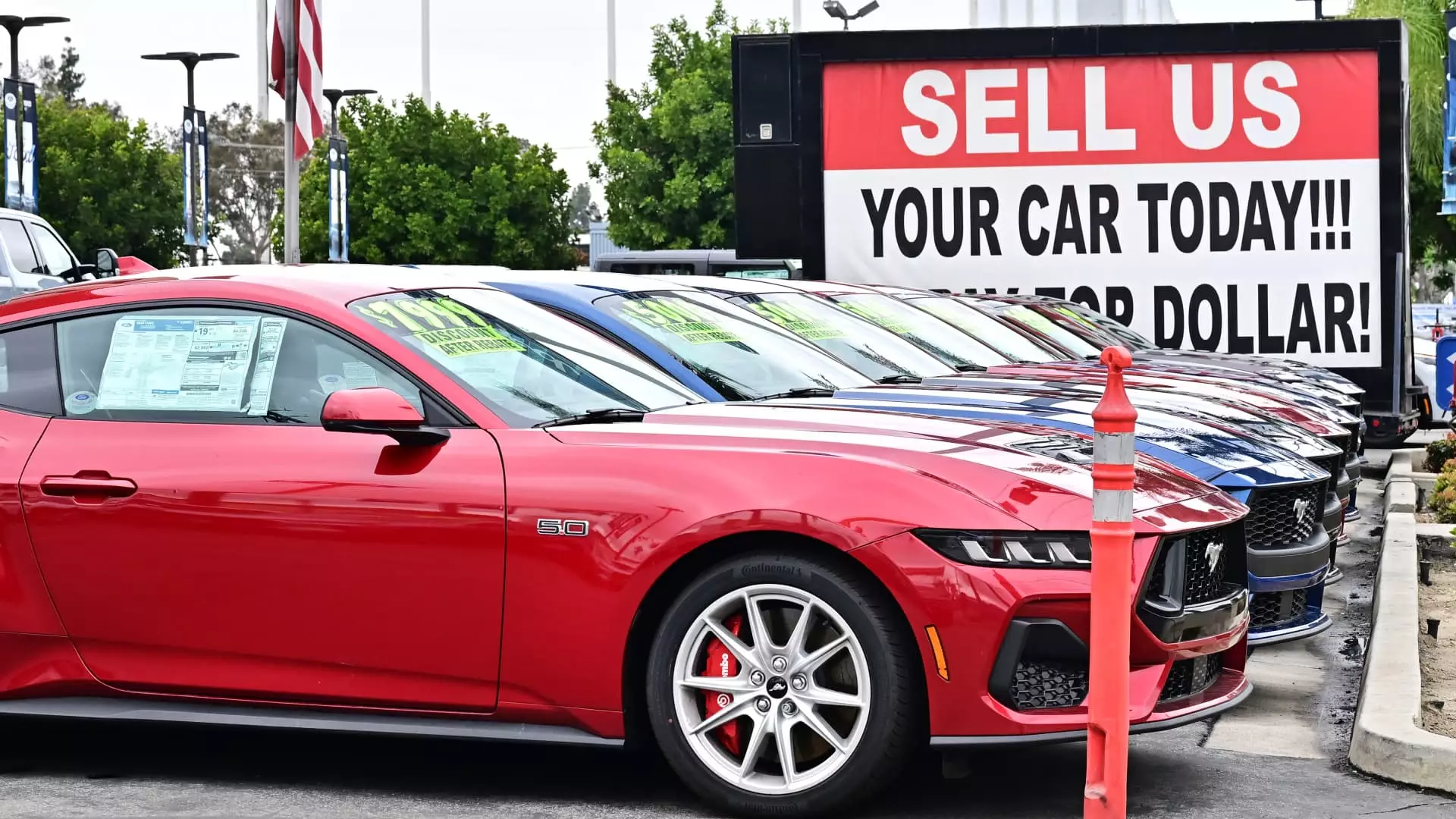In the intricate web of the automotive market, the used vehicle segment has recently experienced a notable shift, reflecting the broader economic forces at play. Last month, the prices of used vehicles witnessed a decline of 1.5% from the seasonally high figures recorded in April, primarily attributed to a consumer surge motivated by fears of escalating costs linked to tariffs. This development should be a red flag for both dealers and consumers, revealing an underlying volatility that belies the apparent stability in year-over-year comparisons—prices remain 4% above last year’s figures.
The recent dip may seem like a short-term normalisation, but it hints at the precariousness of the current market environment. Jeremy Robb from Cox Automotive astutely notes that while wholesale appreciation was robust in April, the market has exhibited a significant pullback. This suggests that potential purchasers are still grappling with the aftershocks of economic policies, particularly the tariffs imposed during the previous administration.
Tariffs and Their Ripple Effects
The landscape for used vehicles has undeniably been shaped by both global and national policies, specifically the 25% tariffs on new imported vehicles and parts. While these tariffs don’t directly affect the resale market, their indirect impact is profound. There is a connectedness in the automotive ecosystem; when new car prices escalate, consumers naturally gravitate towards the used market as an alternate avenue for vehicle ownership. This trend isn’t just an economic anomaly; it’s a stark reflection of consumers’ financial anxieties.
While the broader economic indicators may paint a rosy picture, the reality is more nuanced. The pressing issue of dwindling inventories has forced consumers to hold onto their vehicles longer, exacerbating supply limitations and complicating the purchasing process. The current inventory stands at 2.2 million used vehicles, which, while significant, is still relatively low when contextualized against historical data. This discrepancy is a product of years of subdued production exacerbated by the pandemic and ongoing supply chain disruptions.
The Retail Reality and Consumer Behavior
Even as the levels of retail used vehicle sales reflect a curious paradox, with a 3% decline month-on-month but a 4% year-on-year increase, it underscores the fluctuations that have come to characterize this market. The inability of retail prices to promptly follow the dip in wholesale prices suggests a troubling disconnect. For consumers relying on used vehicles as a primary means of transport, this mismatch can lead to significant financial strain, especially if they are forced to purchase at inflated prices.
A liberal viewpoint would assert that this market scenario points to broader systemic issues in economic policy, notably, where the least fortunate remain tethered to the volatile whims of pricing changes. The disparity in how market prices affect different demographics should urge policymakers to explore solutions that stabilize vehicle pricing in relation to consumer needs. In a market as integral as automotive transportation, we should consider how best to harmonize efficiency and accessibility, ensuring that all consumers have equitable access to reliable transportation.
Ultimately, as we navigate this uncertain terrain, the importance of market stability cannot be overstated. The repercussions of pricing volatility extend beyond personal finances; they touch the very fabric of our society, highlighting the need for a more responsive and responsible automotive market.


Leave a Reply